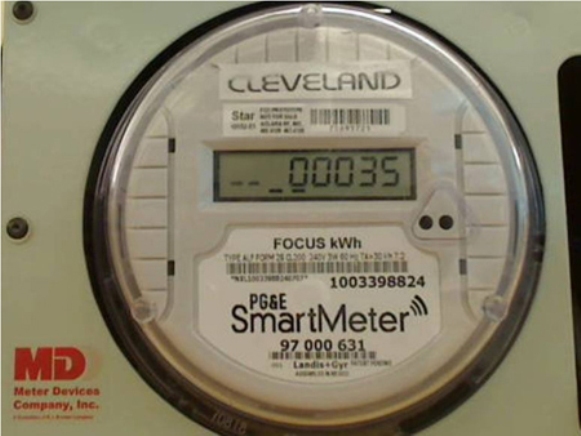Smart Meter Opt-out
Critics of smart meters, those new wireless meters that PG&E has been installing and which some critics believe cause health problems as varied as insomnia and cancer, can now breathe a sigh of relief. The utility company is offering residents the option to turn the wireless signals off. That is, for a fee.
According to the San Francisco Chronicle, “Under PG&E’s plan, residents could pay $14 to $20 per month, plus an upfront fee to have the signal disabled. The company said the fee would pay for sending meter readers to those homes.”
The new meters function by wirelessly transmitting utility usage to the company via a dedicated radio signal. While PG&E says the new technology saves on both resources and costs allowing for more streamlined and exact readings on usage, critics assert that they cause – or have the potential to cause – serious health problems.
The Associated Press reports that, “Some residents blame the signals – similar to those from cell phones and laptops – for health problems from headaches to insomnia. A state study found that scientists have not discovered any evidence that the signals are harmful.”
And while one would think this opt-out option would appease detractors, it has not done so completely. Community members who are opposed to the technology cite that while they can opt-out, the presence of the smart meters still lurks in their neighbors’ homes or in local businesses like a dark cloud effecting their own health.
[via The Mercury News]







I think the health issue is a non-issue.
That being said, there is an issue with the accuracy of these meters. I’m sure the majority of the new meters work just fine, but I would suggest to anyone with a smart meter to make sure you hang on to your old bills to compare with the new readings. Make sure you are compare August to August, not a February to July bill.
Here is what I recently ran into:
I am an electricity broker in Texas, with thousands of clients — both commercial and residential.
One of my commercial clients had his analog meter replaced earlier this year with a new “smart” meter. The first few months went by without issue, but then suddenly his monthly usage jumped from an average of 5,500kwh to over 88,000kwh. The company that manages the new new smart meter, Oncor, came out and verified the reading and tested the meter. The testing showed the meter to be correct over 99% of the time. Because of this visit and testing, Oncor said the reading was correct.
Oncor was oblivious to the fact that it was practically impossible that a small office location of this size could use 88,000kwh in a single month. It’s more than their highest annual usage!
Because Oncor is a monopoly in this part of Texas (DFW area), their service department has no incentive to try to right an obvious wrong. After several weeks of getting nowhere, I began to call the local TV stations, and that finally got Oncor’s attention. The meter has now been replaced by another “smart” meter, and the client’s usage for the month in question is being set to equal the previous year’s usage for that month.
They said that although the meter is correct over 99% of the time, this meter evidently had some technical issues that caused the readings to jump dramatically.
Luckily, this error was obvious — at least to everyone except Oncor’s service department. What happens to those electricity users that have meters that cause the readings to jump in small increments? They are still paying for more electricity than they are using, but they have no way to prove it and no one that will listen to them.
Nice post